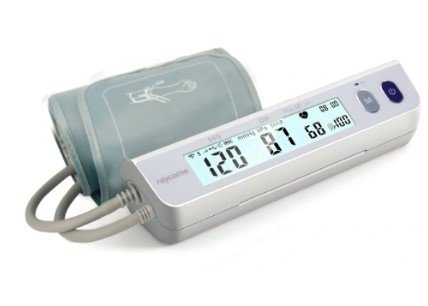Advancements in Alzheimer's Disease Research: Impact on Diagnostic Testing Methods in Medical Labs and Phlebotomy Practices
Summary
- Advancements in Alzheimer's disease research have led to improved diagnostic testing methods.
- Medical labs and phlebotomy practices in the United States are incorporating new technologies to better detect and monitor Alzheimer's disease.
- These advancements are helping healthcare professionals provide better care and support for patients with Alzheimer's disease.
Introduction
Alzheimer's disease is a debilitating neurodegenerative disorder that affects millions of people worldwide. As researchers continue to make strides in understanding the disease, advancements in diagnostic testing methods have also progressed. This article will explore the impact of these advancements on medical labs and phlebotomy practices in the United States.
Diagnostic Testing Methods for Alzheimer's Disease
Diagnosing Alzheimer's disease can be challenging, as there is no single test that can definitively identify the condition. Instead, healthcare professionals rely on a combination of assessments, including medical history, physical exams, neurological tests, and laboratory tests. In recent years, advancements in research have led to the development of more accurate and reliable Diagnostic Tests for Alzheimer's disease.
Biomarker Testing
One of the most significant advancements in Alzheimer's disease research is the use of Biomarkers to detect the presence of the disease. Biomarkers are indicators in the body that can signal the presence of a particular condition. In the case of Alzheimer's disease, Biomarkers such as amyloid beta and tau proteins in cerebrospinal fluid or blood can help healthcare professionals diagnose the disease at an earlier stage.
- Cerebrospinal fluid (CSF) testing: By analyzing the levels of amyloid beta and tau proteins in the CSF, healthcare professionals can make a more accurate diagnosis of Alzheimer's disease.
- Blood-based biomarker testing: Researchers are also exploring the use of blood tests to detect Biomarkers associated with Alzheimer's disease, offering a less invasive alternative to CSF testing.
Imaging Techniques
Advancements in imaging techniques have also revolutionized the way Alzheimer's disease is diagnosed and monitored. Imaging tests such as positron emission tomography (PET) scans and magnetic resonance imaging (MRI) can help visualize changes in the brain associated with Alzheimer's disease, such as the accumulation of amyloid plaques and neurofibrillary tangles.
- PET amyloid imaging: This technique allows healthcare professionals to detect the presence of amyloid plaques in the brain, which are a hallmark of Alzheimer's disease.
- fMRI studies: Functional MRI studies can assess brain activity and connectivity, providing valuable insights into the progression of Alzheimer's disease.
Impact on Medical Labs and Phlebotomy Practices
As advancements in Alzheimer's disease research continue to evolve, medical labs and phlebotomy practices in the United States are adapting to incorporate new diagnostic testing methods into their workflows. These advancements have several implications for healthcare professionals working in these settings.
Improved Accuracy and Efficiency
The use of biomarker testing and imaging techniques in diagnosing Alzheimer's disease has significantly improved the accuracy and efficiency of diagnostic testing methods. Healthcare professionals can now detect the disease at an earlier stage, allowing for timely intervention and treatment.
Specialized Training and Education
With the introduction of new diagnostic testing methods for Alzheimer's disease, healthcare professionals working in medical labs and phlebotomy practices may require specialized training and education to effectively perform these tests. Phlebotomists, in particular, may need to develop new skills to collect and handle samples for biomarker testing.
Collaboration with Other Healthcare Providers
Advancements in Alzheimer's disease research have highlighted the importance of collaboration among Healthcare Providers, including medical lab technicians, phlebotomists, neurologists, and geriatric specialists. By working together, these professionals can provide comprehensive care and support for patients with Alzheimer's disease.
Conclusion
The impact of advancements in Alzheimer's disease research on diagnostic testing methods in medical labs and phlebotomy practices in the United States is profound. By incorporating new technologies such as biomarker testing and imaging techniques, healthcare professionals can improve the accuracy and efficiency of diagnosing Alzheimer's disease. These advancements are not only enhancing the quality of care for patients with Alzheimer's disease but also shaping the future of healthcare delivery in the United States.

Disclaimer: The content provided on this blog is for informational purposes only, reflecting the personal opinions and insights of the author(s) on the topics. The information provided should not be used for diagnosing or treating a health problem or disease, and those seeking personal medical advice should consult with a licensed physician. Always seek the advice of your doctor or other qualified health provider regarding a medical condition. Never disregard professional medical advice or delay in seeking it because of something you have read on this website. If you think you may have a medical emergency, call 911 or go to the nearest emergency room immediately. No physician-patient relationship is created by this web site or its use. No contributors to this web site make any representations, express or implied, with respect to the information provided herein or to its use. While we strive to share accurate and up-to-date information, we cannot guarantee the completeness, reliability, or accuracy of the content. The blog may also include links to external websites and resources for the convenience of our readers. Please note that linking to other sites does not imply endorsement of their content, practices, or services by us. Readers should use their discretion and judgment while exploring any external links and resources mentioned on this blog.
